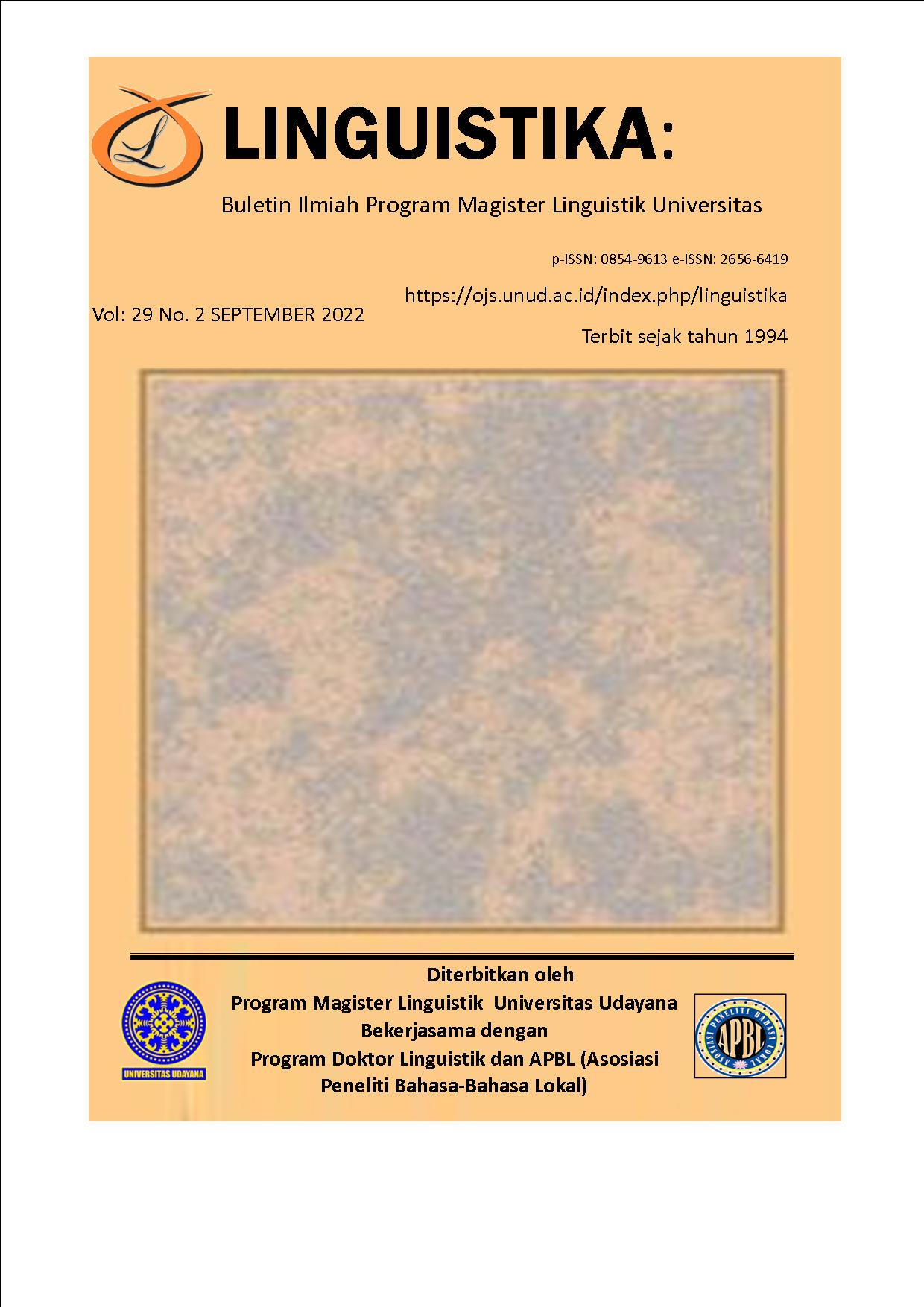Dissociative Identity Disorder In K. Webster’s Novel Whispers And The Roars
Abstract
This research aimed to study a literary work, generally it focuses on certain or special factors of literary works such as moral, aesthetic, behavioral, society, environment, psychology, etc. This thesis deals with psychological literature approach. Psychological approach works on character psychological aspect in literature. The main purpose of this study is to analyze psychological aspect especially Dissociative Identity Disorder mental illness on novel Whispers and Roars by K.Webster. The research objective is to find what kind of multiple personalities and what caused the Dissociative Identity Disorder. The theory of this research is psychological literature. The methodology of this research is descriptive qualitative method. The analysis are collected from the texts in the novel that related to Dissociative Identity Disorder. The main character has suffered from bad experiences that made her unconsciously create and alter inside her head. Each alter triggered from different kind of experiences. The result of this thesis is the kinds of multiple personalities the main character had in mind. There are avenger personality, protector personality, child personality, and persecutor personality.













